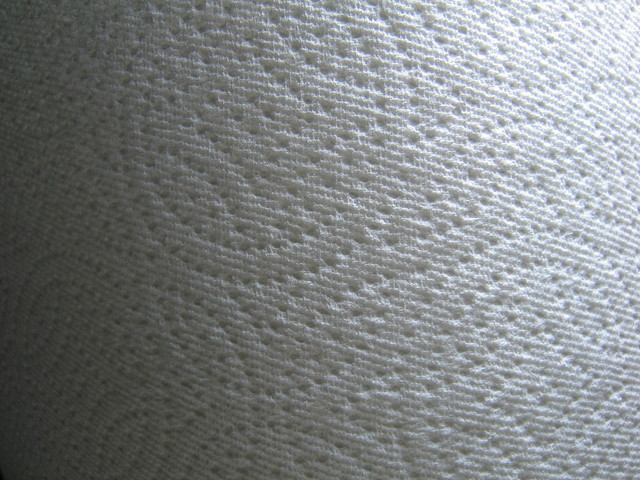
- Home >
- Paper Towel Experiment
Paper Towel Experiment
Which is the Most Absorbent?
Which is the Most Absorbent?
The Paper Towel Experiment is a project about which type of paper can absorb more water.
This article is a part of the guide:
Browse Full Outline
- 1Kids' Science Projects
- 2How to Conduct Science Experiments
- 3Experiments With Food
- 4Science Experiments
- 4.1Pendulum
- 4.2Paper Towel
- 4.3Paper Airplane
- 4.4Charge a Light Bulb
- 4.5Lifting Ice Cube
- 4.6Magic Egg
- 4.7Magic Jumping Coin
- 4.8Invisible Ink
- 4.9Making-a-Rainbow
- 4.10Oil Spill
- 4.11Balloon Rocket Car
- 4.12Build an Electromagnet
- 4.13Create a Heat Detector
- 4.14Creating a Volcano
- 4.15Home-Made Glue
- 4.16Home-Made Stethoscope
- 4.17Magic Balloon
- 4.18Make a Matchbox Guitar
- 4.19Make Your Own Slime
- 5Historic Experiments

In every store, big or small, there are numerous brands of paper towels available, each claiming to be the best, the most absorbent or the cheapest. How do we prove or disprove these claims? How do we work out which paper towels are truly great and which are almost entirely useless?
We have all seen advertisements where two brands of paper towels are compared by observing how quickly or thoroughly they suck up a mysterious blue liquid or by wiping up some muddy footprints from their kitchen floor.
This, as we know, is not very scientific - there are no figures, no proof and little truth.
Here we are going to show you how to conduct an experiment to test one of these claims: the absorbency of paper towels.

Some Facts About Kitchen Towel
- Paper towels were invented by Arthur Scott in Philadelphia, USA, in around 1900. From humble beginnings, paper kitchen towels have become a billion dollar industry.
- Paper towels are often made from post consumer recycled paper fiber, requiring fewer trees being cut down and using up to 50% less energy.
Performing the Paper Towel Experiment
Hypothesis
“More expensive brands of paper towel are more absorbent.”
What You Will Need for the Paper Towel Experiment
- At least four brands of absorbent paper towel
- A stopwatch
- A beaker
- A graduated cylinder
- A funnel
Method
- Fill the beaker up with exactly 200 ml of water
- Take a sheet of the first brand of towel.
- Fold and insert into the water. As you dip the towel into the water, start your stopwatch.
- After 20 seconds, remove the towel from the beaker and squeeze as much water as you can out of the towel in to the graduated cylinder using the funnel. Make a note of the volume extracted
- Repeat 5 times for each brand and note the results in your data table. You must make sure that each sheet is folded in exactly the same way for the experiment to be constant and correct.
- Write down the results for each brand in your notebook.
Results
Work out an average for each result and write down in a table.
Plot all of your results onto a simple bar graph like the one below; you can do this on a computer or you can use graph paper and pencils.
This will allow you to show which brand of paper towel is the most absorbent and which is truly awful.
Problems and Further Experimentation
Of course, this is a very simple experiment and it does have some limitations; you are testing only one reason why people choose a certain brand.
Some brands might be excellent at soaking up spills but are very expensive. Maybe some brands are not as good at soaking up water but are better at soaking up other liquids like milk or cooking oil.
When a consumer buys paper towels, they are not just looking for absorbency. Price, softness, availability, number of sheets on a roll, and strength are all important factors when buying a roll of kitchen towel.
Perhaps you could design an experiment to rate the strength and softness, or try and calculate how much each towel costs per sheet.
Paper towel manufacturers spend millions of dollars every year but, with a few simple experiments, you can find out which brands truly are the best.
Martyn Shuttleworth (Sep 21, 2008). Paper Towel Experiment. Retrieved Nov 17, 2025 from Explorable.com: https://explorable.com/paper-towel-experiment
You Are Allowed To Copy The Text
The text in this article is licensed under the Creative Commons-License Attribution 4.0 International (CC BY 4.0).
This means you're free to copy, share and adapt any parts (or all) of the text in the article, as long as you give appropriate credit and provide a link/reference to this page.
That is it. You don't need our permission to copy the article; just include a link/reference back to this page. You can use it freely (with some kind of link), and we're also okay with people reprinting in publications like books, blogs, newsletters, course-material, papers, wikipedia and presentations (with clear attribution).
Related articles
Get all these articles in 1 guide
Want the full version to study at home, take to school or just scribble on?
Whether you are an academic novice, or you simply want to brush up your skills, this book will take your academic writing skills to the next level.
Download electronic versions:
- Epub for mobiles and tablets
- For Kindle here
- PDF version here
This article is a part of the guide:
Browse Full Outline
- 1Kids' Science Projects
- 2How to Conduct Science Experiments
- 3Experiments With Food
- 4Science Experiments
- 4.1Pendulum
- 4.2Paper Towel
- 4.3Paper Airplane
- 4.4Charge a Light Bulb
- 4.5Lifting Ice Cube
- 4.6Magic Egg
- 4.7Magic Jumping Coin
- 4.8Invisible Ink
- 4.9Making-a-Rainbow
- 4.10Oil Spill
- 4.11Balloon Rocket Car
- 4.12Build an Electromagnet
- 4.13Create a Heat Detector
- 4.14Creating a Volcano
- 4.15Home-Made Glue
- 4.16Home-Made Stethoscope
- 4.17Magic Balloon
- 4.18Make a Matchbox Guitar
- 4.19Make Your Own Slime
- 5Historic Experiments
Footer bottom





